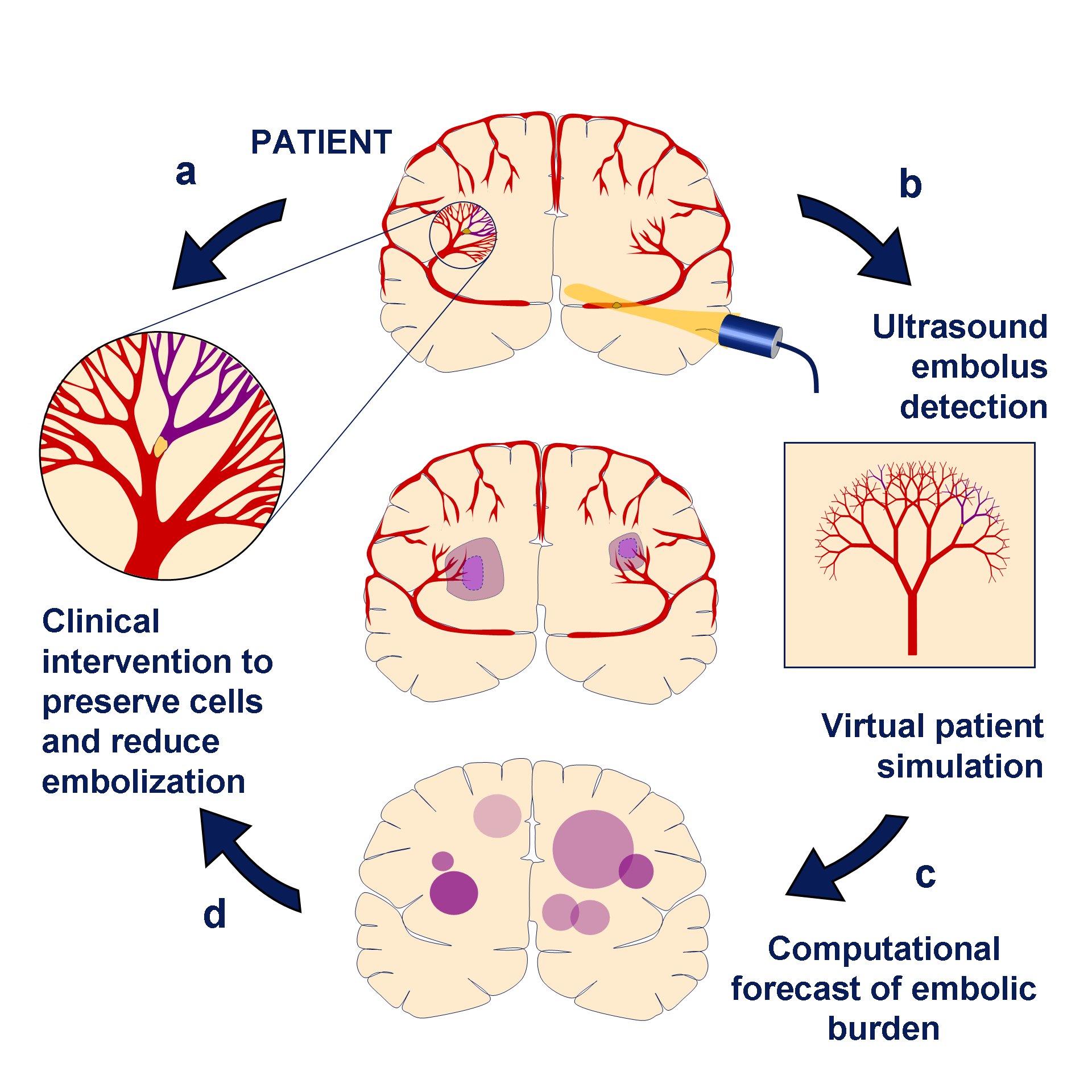Modelling embolic stroke with statistical physics

I am currently developing a model of how air bubbles and solid matter in the bloodstream (emboli) interact with blood-flow in the brain. This work may lead to virtual patient warning systems for clinical procedures. I collaborate with Emma Chung and other researchers at the Department of Cardiovascular Sciences, University of Leicester.
In the model, emboli move on a branching tree with fractal properties that represents the arteries (the fractal characteristics lead to a vasculature that effectively fills all space and so can supply all tissue). An effective interaction forms between blockages and new emboli because blood cannot flow in the direction of blockages. In clinical procedures such as open heart surgery, large numbers of emboli (e.g. blood clots) can be formed, so aspects of stroke have a many particle character. This interaction can lead to more severe stroke symptoms.
- Revealing the mechanisms underlying embolic stroke using computational modeling. E.M.L. Chung, J.P. Hague and D.H. Evans. Phys. Med. Biol. 52 (2007) 7153-7166. (14 pages)
- Embolus trajectory through a physical replica of the major cerebral
arteries
E.M.L.Chung, J.P. Hague, M-A. Chanrion, K.V. Ramnarine, E. Katsogridakis and D.H. Evans Stroke 41 (2010) 647 - Statistical physics of cerebral embolization leading to stroke
J.P.Hague and E.M.L.Chung.
Phys. Rev. E 80 (2009) 051912 (9 pages)
(arXiv:0808.1075) - Similarities between embolic stroke and percolation problems
J.P.Hague and E.M.L.Chung
Int. J. Mod. Phys. B, 23 4150 (2009)
(32nd International Workshop on Condensed Matter Theories)